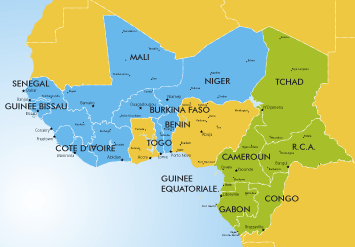The Central African Economic and Monetary Community (CEMAC) Supervisory Board points out in its report that the economies of the subregion will be better off in the next two years.
It is not yet sustainable and inclusive growth to reduce poverty or create jobs for the largest number of inhabitants in the subregional economic space as sought by the six countries of CEMAC last where the economic situation is overall contrasted. However, after a severe economic recession in recent years, we are seeing an improvement in local economies, with a projected growth rate of 3% in 2019 by the Bank of Central African States (BEAC), which is better compared to the growth rate of 1.5% in 2018, or that of 0.9% in 2017.
Meeting on March 12, 2019 in Douala at its 36th ordinary session, the Multilateral Supervisory College of this subregional institution completed two days of work devoted in particular to the 2019 and 2020 perspectives, where it emerges that “the macroeconomic environment in 2018 has been marked by the pursuit of fiscal consolidation in all Member States “. A period certainly contrasted, marked on the one hand by a significant increase in oil production in Congo and Chad, unlike Gabon and Equatorial Guinea, two major oil producers in the sub-region.
In its balance sheet, the College said it also noted “an improvement in the terms of trade, in the background of persistent security tensions in the Lake Chad Basin and in the Central African Republic, as well as the crisis in the North West and Central African regions. Southwest Cameroon ». Signs rather encouraging, in a context where, despite governance concerns, security problems have not always allowed the countries of the zone to deploy their full potential.
Many challenges to be met by CEMAC
The interim report reviewed the state of relations between member countries and the international financial institutions, including the International Monetary Fund (IMF) which led to the signing with countries of the subregion, the Extended Credit Facility. (FEC), found that this device has brought a new breath to the economy of Central Africa.
A rather favorable wind since “our sub-region returned to growth in 2018, after two consecutive years of recession,” noted the College, before stating that “the outlook for 2019-2020 are also generally favorable.” “Good results” made possible by a series of reforms undertaken by States at the regional level under the Economic and Financial Reform Program (Pref-CEMAC).
In any case, the much-sought prosperity remains a long winding road, with many challenges to be met. These include leaving the economy dependent on the oil sector whose international price fluctuations destabilize most of these countries that derive more than 80% of their income, just as it is appropriate to put an emphasis for diversification of activities in the secondary sector, not to mention the mechanization of the primary sector to leave a subsistence agriculture.



